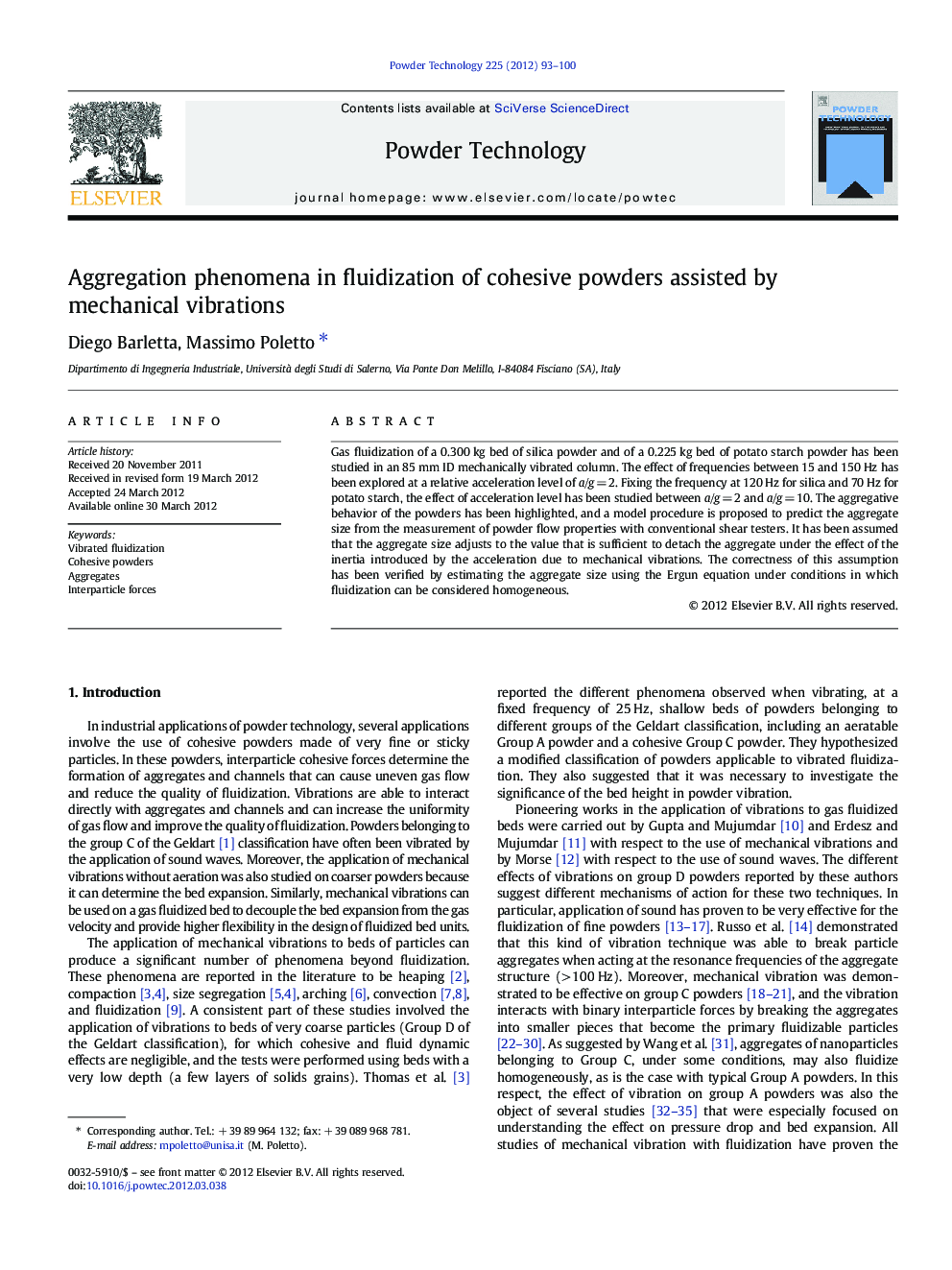| Article ID | Journal | Published Year | Pages | File Type |
|---|---|---|---|---|
| 237130 | Powder Technology | 2012 | 8 Pages |
Gas fluidization of a 0.300 kg bed of silica powder and of a 0.225 kg bed of potato starch powder has been studied in an 85 mm ID mechanically vibrated column. The effect of frequencies between 15 and 150 Hz has been explored at a relative acceleration level of a/g = 2. Fixing the frequency at 120 Hz for silica and 70 Hz for potato starch, the effect of acceleration level has been studied between a/g = 2 and a/g = 10. The aggregative behavior of the powders has been highlighted, and a model procedure is proposed to predict the aggregate size from the measurement of powder flow properties with conventional shear testers. It has been assumed that the aggregate size adjusts to the value that is sufficient to detach the aggregate under the effect of the inertia introduced by the acceleration due to mechanical vibrations. The correctness of this assumption has been verified by estimating the aggregate size using the Ergun equation under conditions in which fluidization can be considered homogeneous.
Graphical abstractThe effects of frequency (15–150 Hz) and of acceleration (2 g–10 g) of mechanical vibration on gas fluidization of two cohesive powders have been experimentally studied. The aggregative behavior of the powders has been highlighted, and a model procedure is proposed to predict the aggregate size from the measurement of the powder flow properties with conventional shear testers.Figure optionsDownload full-size imageDownload as PowerPoint slideHighlights► Silica and potato starch cohesive powders were fluidized with gas and vibrations. ► The effect of vibrational frequency was tested between 15 and 150 Hz at a/g = 2. ► The effect of vibrational acceleration was tested between a/g = 2 and a/g = 10. ► A model was developed to predict the aggregative behavior of powders. ► The model was based on the powder flow properties measured with a ring shear tester.
